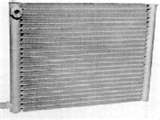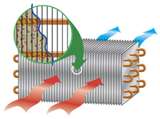The heat from the engine is created when the fuel is ignited inside the combustion chamber of each cylinder. Combustion chamber temperatures can run extremely high. They can approach 1000°F. If it wasn’t for the engine cooling system internal parts like the Pistons, valves and cylinder walls would eventually melt.
Liquid engine cooling systems
Find Your Online Car Repair Manual Today! ->>
A vehicle’s radiator transfers the heat of the engine coolant to the air flowing through it via highly conductive metal fins. The engine coolant is then returned to the block by some type of water pump to repeat the cycle. The engine cooling systems are pressurized in most cases to about 15 pounds per square inch so that the boiling of the liquid will not occur.
The boiling point is also pushed up by the mixture of the anti-freeze. This is why you should not just add plain water. On the other hand you also need to check that the engine coolant that you are adding does contain the proper amount of water. When you go into your auto parts store sometimes they have coolant available that needs to be mixed 50-50 with water.
Another thing to consider is the brand or type that is installed in your automobile many vehicles today offer different types of extended life engine coolants. While older automobiles still have the ethylene glycol-based type, which is most commonly green in color. Note that many engine coolants are poisonous and need to be handled with care and kept out of the reach of pets and children.
Make sure you check your owner’s manual before topping off the coolant reservoir. You really do not want to mix different kinds of engine coolant because it can reduce the efficiency of the heat removal. Another thing to check in your owner’s manual would be this service intervals or the replacement of the engine coolant.
Even extended life fluids most often recommend complete replacement at the 100,000 mile mark. Vehicles with the older type coolant usually recommend replacement at around 30,000 miles. Before you approve a coolant flush at your local quick change oil center make sure that they not only got the recommendation right but are installing the right kind of replacement fluid.
For more articles about how the automobile works this next link will take you to the homepage for the blog about auto repair. I also have another site that is more technical or advanced and supplies my recommended resources for learning car repair.


